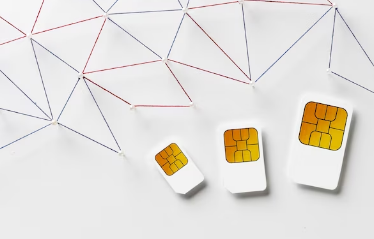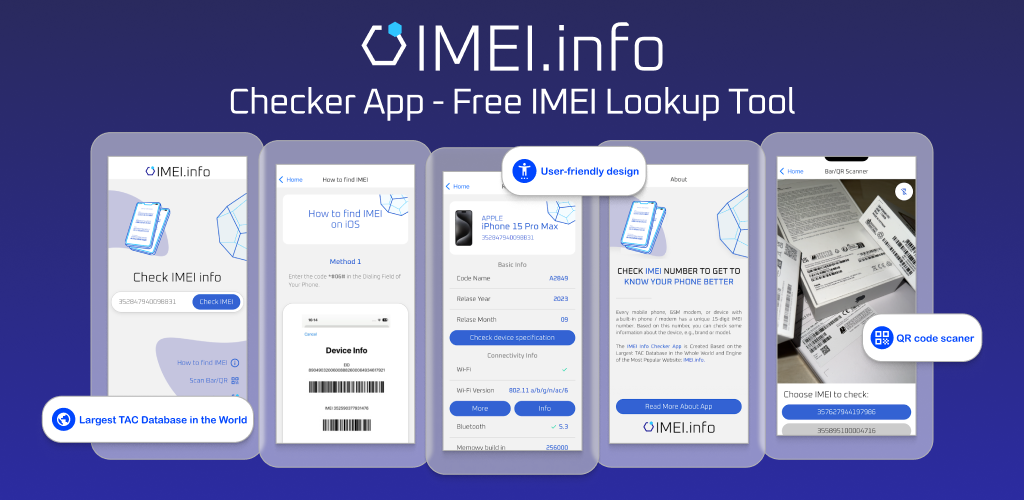Imagine your Samsung Galaxy smartphone as a vault, storing not just your photos and messages but also your personal information, financial details, and even your digital identity. With cyber threats lurking around every corner, the need for robust mobile security has never been more evident.
However, rest assured, in the realm of mobile security, evolution is constant, and it brings with it a beacon of hope—the transition from the IMEI number to the cutting-edge realm of biometrics.
From IMEI to Biometrics: A Journey of Mobile Security
Picture the IMEI number as the backbone of mobile security—a digital sentinel watching over your device's every move. This unique identifier, akin to a serial number stamped on each device, acts as a digital passport, facilitating communication between your smartphone and service providers. In cases of theft or loss, it serves as a lifeline, enabling authorities to track down and recover stolen devices. However, as technology advances, so does the need for more robust security measures.
Amidst this evolving landscape, one crucial addition to your security arsenal stands out, and that tool is VPN. While the IMEI number offers device-specific protection, using ExpressVPN for router extends its shield to encompass your entire network. It encrypts your internet connection, shielding your data from prying eyes and potential threats.
The Rise of Biometric Security
Biometric security has emerged as a cornerstone of mobile device protection, offering a robust alternative to traditional authentication methods. Rather than relying on complex passwords or vulnerable PIN codes, biometric authentication utilizes unique biological characteristics—such as fingerprints, facial features, or iris patterns—to grant access to digital devices. This technology streamlines the authentication process, providing users with a seamless and secure means of unlocking their devices.
Advantages of Biometric Security
The convenience afforded by biometric authentication cannot be overstated in a fast-paced world where every second counts; the ability to unlock your smartphone with a simple touch or glance eliminates the need for cumbersome login procedures. Beyond convenience, biometric security offers an unparalleled level of protection. Utilizing personal biological traits it creates a highly secure barrier against unauthorized access. This level of security is akin to having a dedicated guardian at the entrance to your digital domain, ensuring only authorized individuals can gain access.
Common Mistakes and Tips for Success
While biometric security offers significant advantages, it's essential to approach its implementation with caution, taking into account not only its technical capabilities but also its ethical implications. Not all biometric sensors are created equal, and investing in subpar devices may compromise both security and privacy. Therefore, it's crucial to prioritize devices equipped with high-quality biometric capabilities, ensuring reliable authentication while minimizing the risk of unauthorized access.
Ethical Concerns
One of the primary ethical concerns surrounding biometric authentication is the potential for misuse and abuse of personal data. Biometric information, such as fingerprints or facial features, is inherently sensitive, as it is unique to each individual and cannot be changed or replaced. Consequently, the unauthorized collection or exploitation of biometric data raises serious privacy concerns, as it can lead to identity theft, surveillance, and other forms of digital harm.
Negative Outcomes
While biometric authentication offers enhanced security, there are potential negative outcomes associated with its use. For instance, research published in the journal "IEEE Transactions on Information Forensics and Security" found that certain biometric systems, such as facial recognition, can exhibit high error rates, leading to false positives and false negatives. This can result in users being denied access to their devices or data, leading to frustration and inconvenience.
Moreover, the reliance on biometric data for authentication introduces new risks, such as the potential for identity theft through the unauthorized replication or spoofing of biometric traits. Additionally, concerns have been raised regarding the potential for discrimination and bias in biometric systems, particularly in cases where certain demographic groups may be disproportionately affected.
What the Future of Biometric Authentication Holds
Looking ahead, the future of biometric authentication holds both promise and challenges. On one hand, advancements in biometric technology, such as improved accuracy and reliability, have the potential to enhance security and convenience for users. Biometric authentication may also play a vital role in emerging fields such as healthcare, where it can be used for patient identification and access control.
However, as biometric systems become more widespread, it's essential to address concerns surrounding privacy, security, and ethics. This includes implementing robust data protection measures, ensuring transparency and accountability in the use of biometric data, and safeguarding against potential abuses of power. Ultimately, the future of biometric authentication will depend on how effectively we balance the benefits of security and convenience with the need to protect individual privacy and rights.
Embracing the Future of Mobile Security
Navigating the ever-changing landscape of mobile technology, the transition from IMEI to biometrics signifies a significant advancement in security. However, ensuring comprehensive protection for our digital assets necessitates a multifaceted approach beyond biometric authentication alone. By integrating various security tools and practices, we can further bolster our defenses and safeguard our digital identities with confidence.
By embracing a holistic approach to mobile security that incorporates biometrics, VPNs, multi-factor authentication, and other advanced tools and practices, we can navigate the digital landscape with confidence, knowing that our digital identities and sensitive information are protected against evolving threats. Ultimately, the future of mobile security rests on our collective commitment to innovation, accountability, and the preservation of individual privacy rights in an increasingly interconnected world.
As mobile security continues to evolve, each advancement brings us closer to a safer and more secure future. The transition from IMEI to biometrics signifies progress in safeguarding digital assets and preserving user privacy. By embracing these innovations, we empower ourselves to navigate the digital landscape with confidence, knowing that our devices are protected by the latest in security technology. As we move forward, let us remain vigilant in prioritizing security and embracing the possibilities that biometric authentication offers in securing our digital realm.

Leveraging Technology for Staffing Solutions in Texas
In the ever-evolving landscape of the job market, Texas stands as a dynamic hub of economic activity. With its diverse industries ranging from technology and healthcare to energy and manufacturing, the state presents unique staffing challenges and opportunities.

Where and How to Send Faxes?
Faxing remains an important method of document transmission despite the advancement of digital technologies. There are situations where sending a fax is the most convenient or even the only way to transfer information.

IMEI Tracking: How Law Enforcement Agencies Use IMEI To Combat Crime
Smartphones are an everyday part of our lives, but many people are unaware of the unique, 15-digit IMEI (International Mobile Equipment Identity) serial number associated with their phone.

A Step-By-Step Guide To Converting PDF To Word Using Smallpdf
Whether you are a professional employee or a business entrepreneur, you must have encountered issues in situations where you had to convert PDF files to Word for quick editing and customizations.

How many eSIMs can be used in iPhone?
Are you looking to streamline your mobile experience with an eSIM for your iPhone? The advent of eSIM technology has revolutionized the way we connect, allowing for a more seamless and efficient use of our devices. With an eSIM iPhone, you can forget about the hassle of physical SIM cards and enjoy the benefits of multiple network plans on a single device. But how many eSIMs can an iPhone support? And how do you go about adding an eSIM to your iPhone? In this article, we'll dive into the ins and outs of eSIM capabilities on your SIM iPhone, providing you with a step-by-step guide to getting set up. Keep reading to unlock the full potential of your iPhone with eSIM technology and learn how to enhance your connectivity with ease.

IMEI Info Checker App
The awaited moment has arrived! After a period of anticipation, we take immense pride in announcing the launch of the IMEI Info Checker App, marking a pivotal moment in accessing concealed mobile device information. In today's digitally intertwined landscape, understanding your device's nuances is pivotal. This long-awaited unveiling undoubtedly simplifies access to concealed information about any mobile device. Soon available on the App Store for iOS and the Play Store for Android, this app promises a transformative shift in how users interact with their device data.

eSIM Quick Transfer - All You Need to Know
In the ever-evolving landscape of smartphone technology, eSIM (embedded SIM) has emerged as a game-changer, offering greater flexibility and convenience for users. One of the latest innovations in this realm is the eSIM Quick Transfer feature, which streamlines the process of transferring eSIM profiles between devices. Whether you're an iPhone aficionado or an Android enthusiast, understanding the ins and outs of eSIM Quick Transfer is essential for maximizing the potential of your mobile experience.

iPhone GSX Check
Are you seeking essential details about your iPhone's carrier network, warranty status, and other critical information? The iPhone GSX Check provides comprehensive insights into various aspects like simlock network, Find My iPhone status, warranty info, and more.



















